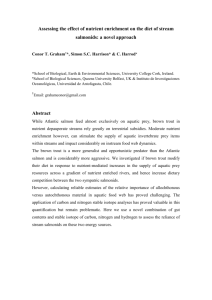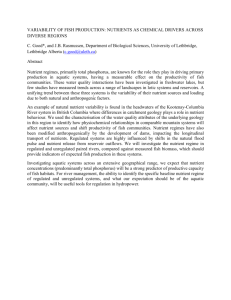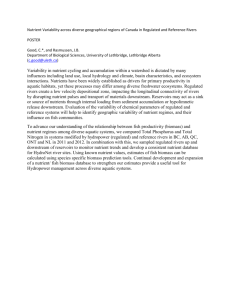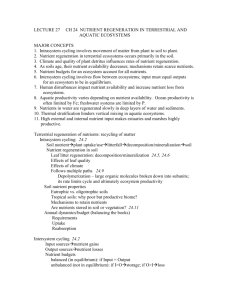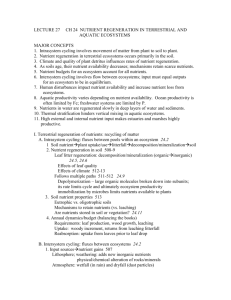nutrient_unit_desc
advertisement
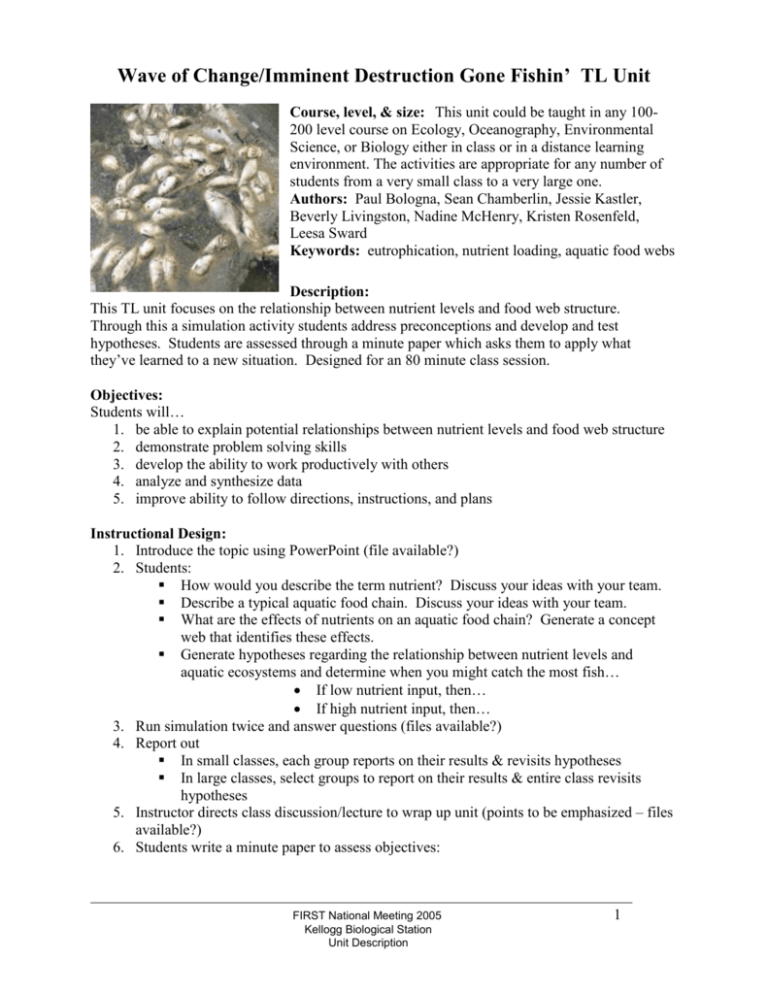
Wave of Change/Imminent Destruction Gone Fishin’ TL Unit Course, level, & size: This unit could be taught in any 100200 level course on Ecology, Oceanography, Environmental Science, or Biology either in class or in a distance learning environment. The activities are appropriate for any number of students from a very small class to a very large one. Authors: Paul Bologna, Sean Chamberlin, Jessie Kastler, Beverly Livingston, Nadine McHenry, Kristen Rosenfeld, Leesa Sward Keywords: eutrophication, nutrient loading, aquatic food webs Description: This TL unit focuses on the relationship between nutrient levels and food web structure. Through this a simulation activity students address preconceptions and develop and test hypotheses. Students are assessed through a minute paper which asks them to apply what they’ve learned to a new situation. Designed for an 80 minute class session. Objectives: Students will… 1. be able to explain potential relationships between nutrient levels and food web structure 2. demonstrate problem solving skills 3. develop the ability to work productively with others 4. analyze and synthesize data 5. improve ability to follow directions, instructions, and plans Instructional Design: 1. Introduce the topic using PowerPoint (file available?) 2. Students: How would you describe the term nutrient? Discuss your ideas with your team. Describe a typical aquatic food chain. Discuss your ideas with your team. What are the effects of nutrients on an aquatic food chain? Generate a concept web that identifies these effects. Generate hypotheses regarding the relationship between nutrient levels and aquatic ecosystems and determine when you might catch the most fish… If low nutrient input, then… If high nutrient input, then… 3. Run simulation twice and answer questions (files available?) 4. Report out In small classes, each group reports on their results & revisits hypotheses In large classes, select groups to report on their results & entire class revisits hypotheses 5. Instructor directs class discussion/lecture to wrap up unit (points to be emphasized – files available?) 6. Students write a minute paper to assess objectives: FIRST National Meeting 2005 Kellogg Biological Station Unit Description 1 Prompt: What were our hypotheses? Did the class results support them? Use what you’ve learned to describe what would happen to the food web structure if there were medium level nutrient inputs. Assessments: 1. Student write hypotheses, test them via the simulation, and report out 2. Students write a minute paper to assess knowledge objectives References: Gallegos L, Jerezano ME, Flores F (1994) Preconceptions and relations used by children in the construction of food chains. Journal of Research in Science Teaching 31: 259-272 Hogan, K. (2000). Assessing students’ system reasoning in ecology. Journal of Biological Education 35(1), 22-28 Photo Citation: www.lumcon.edu. – accessed May 14, 2005. FIRST National Meeting 2005 Kellogg Biological Station Unit Description 2

